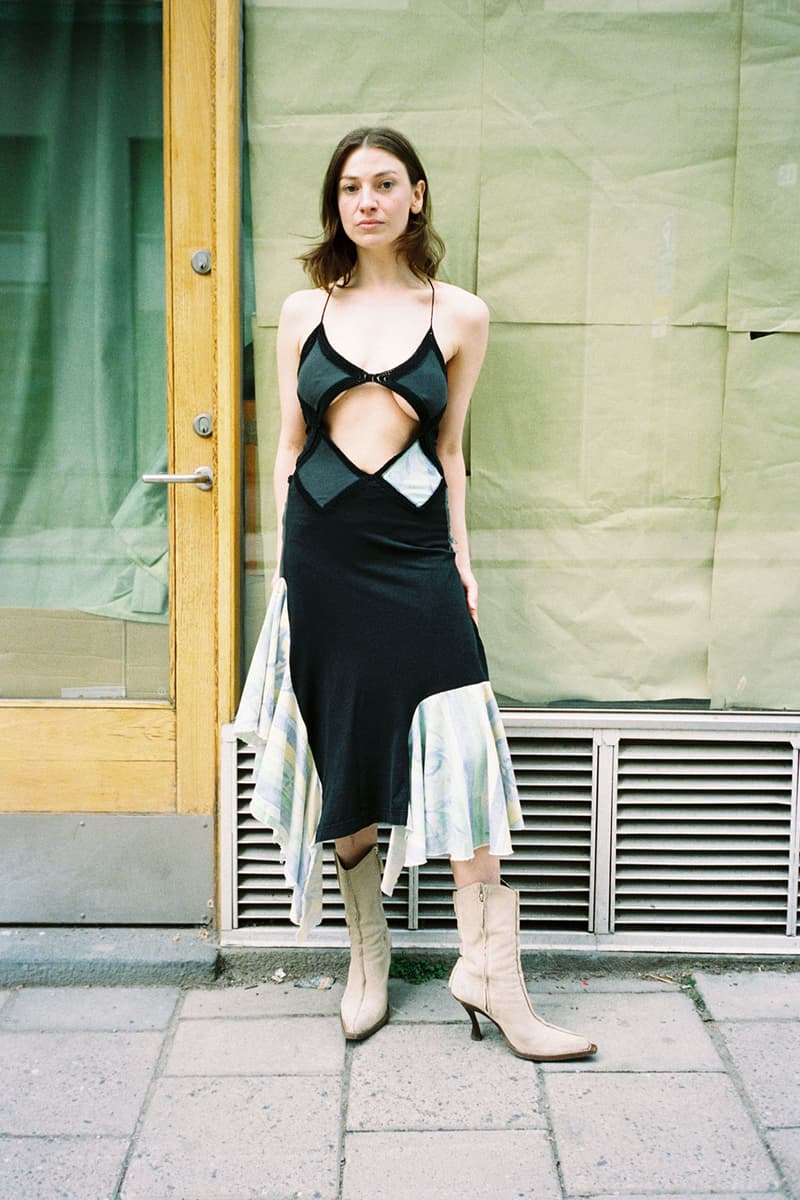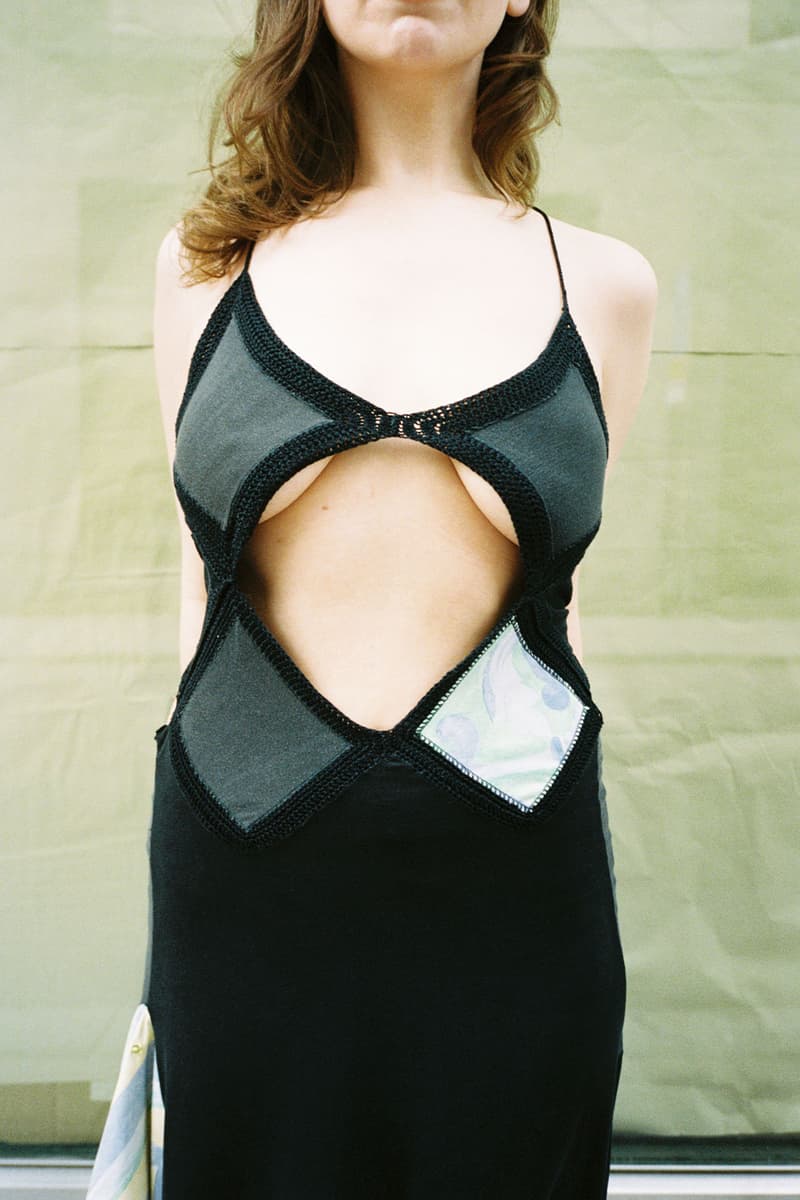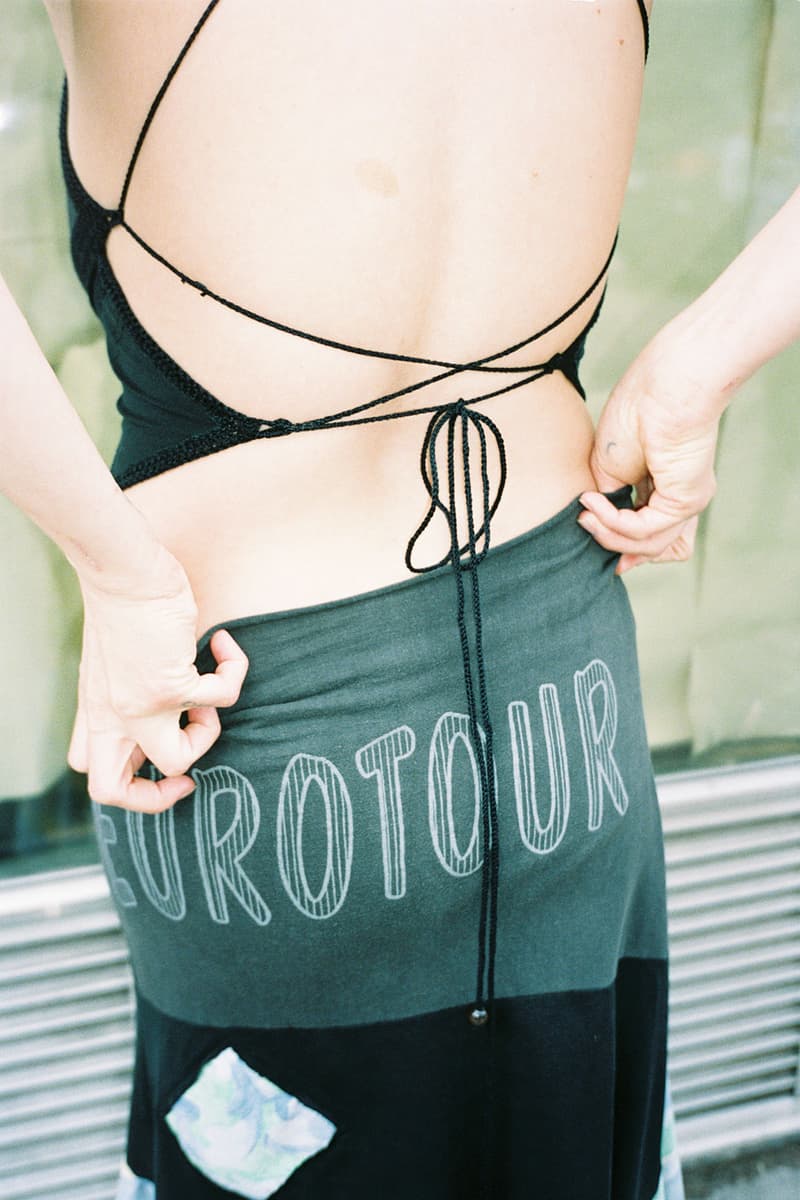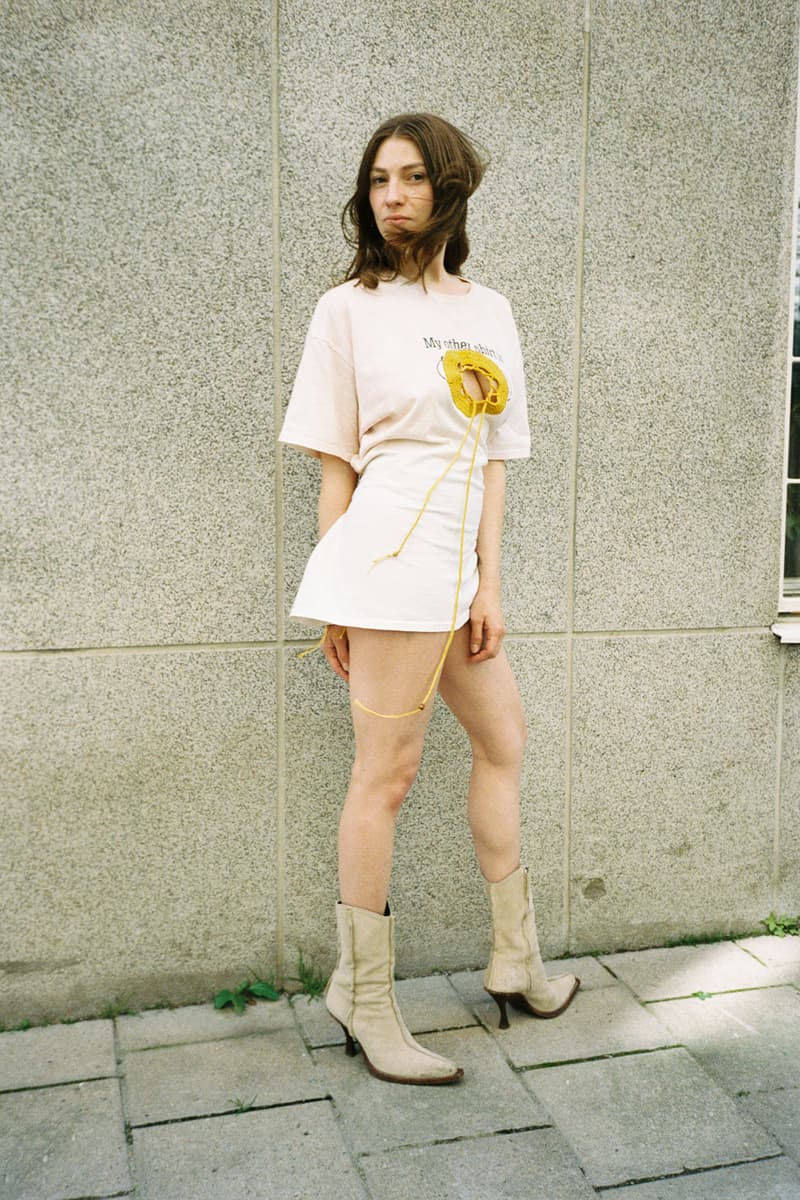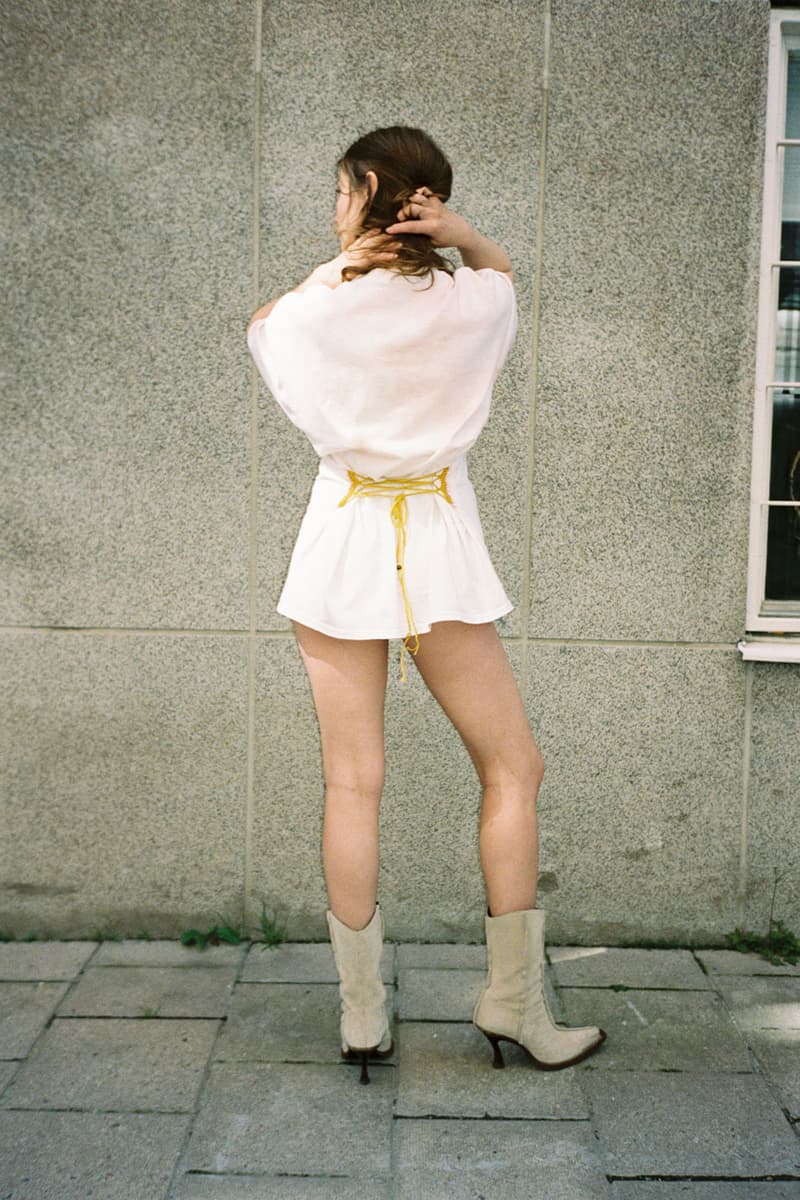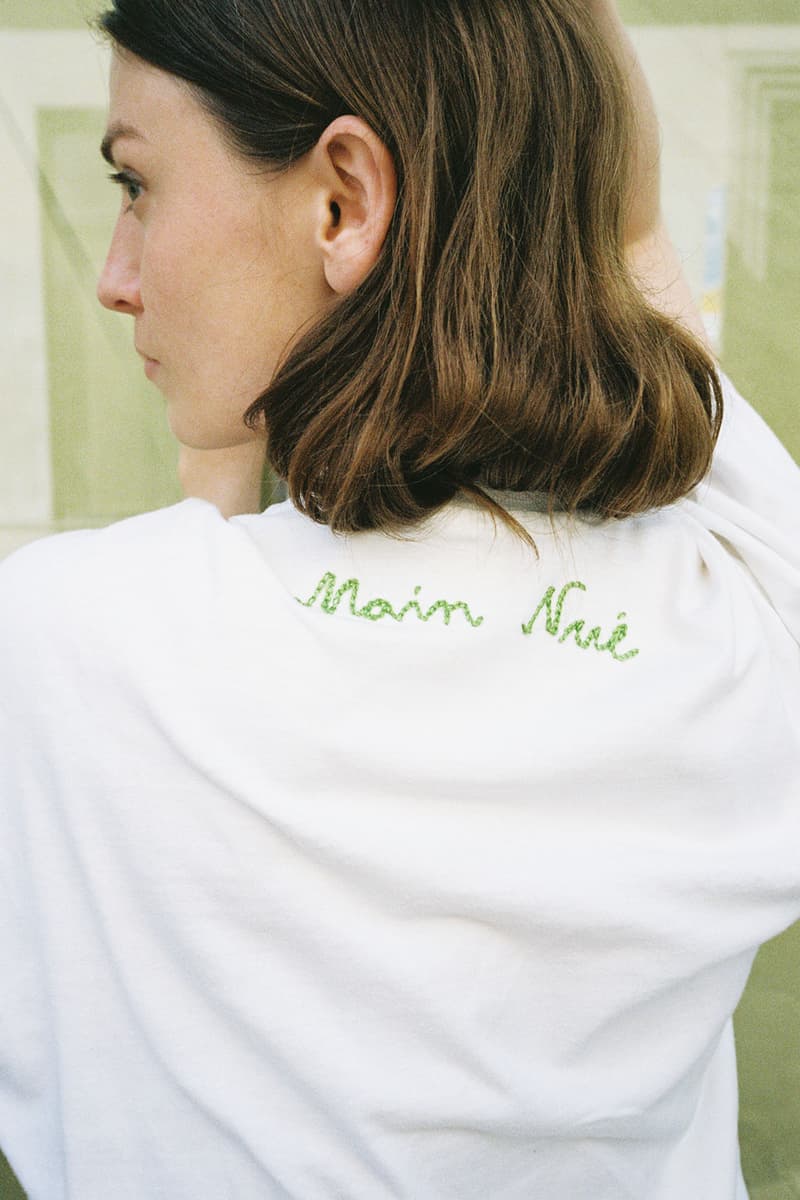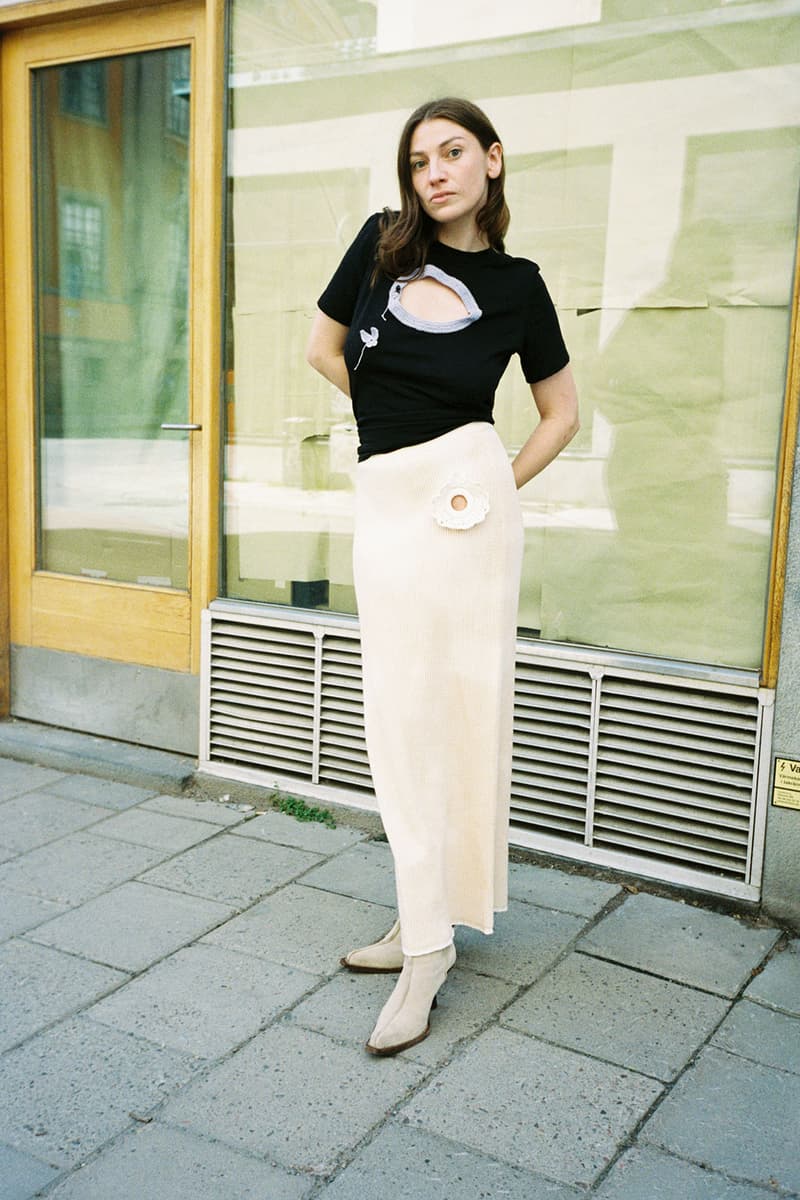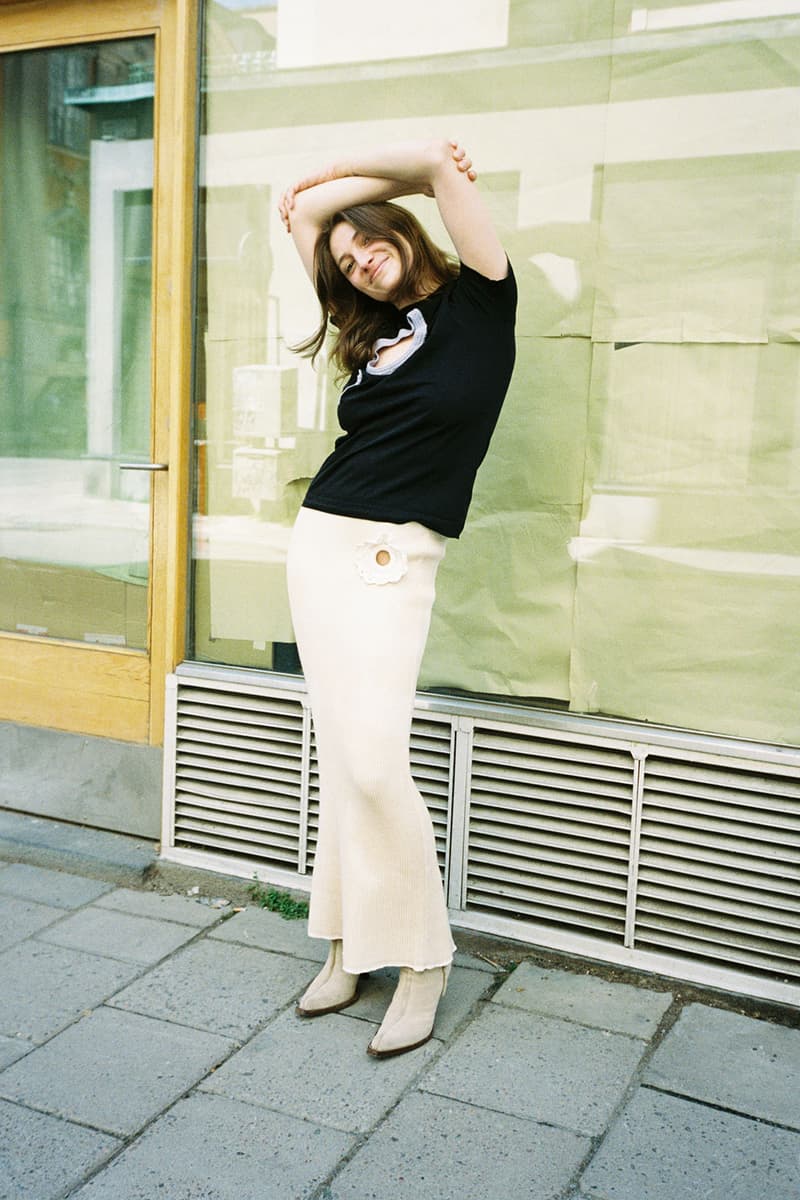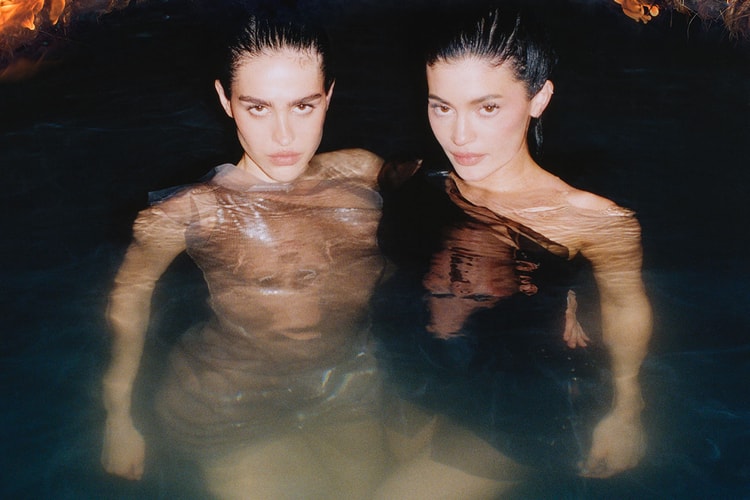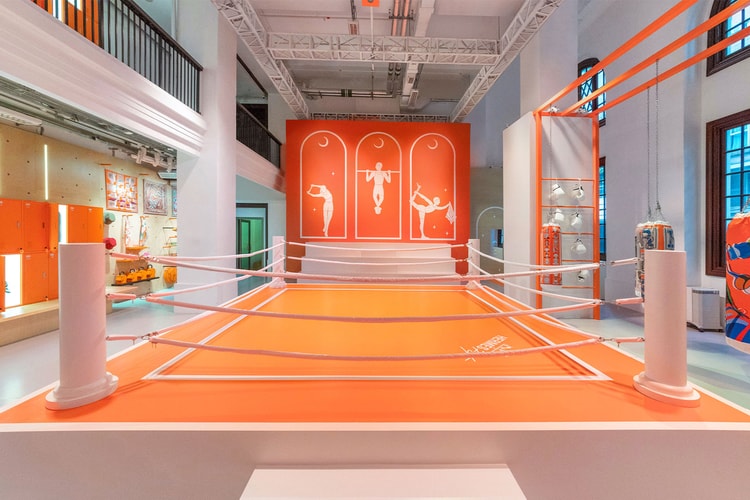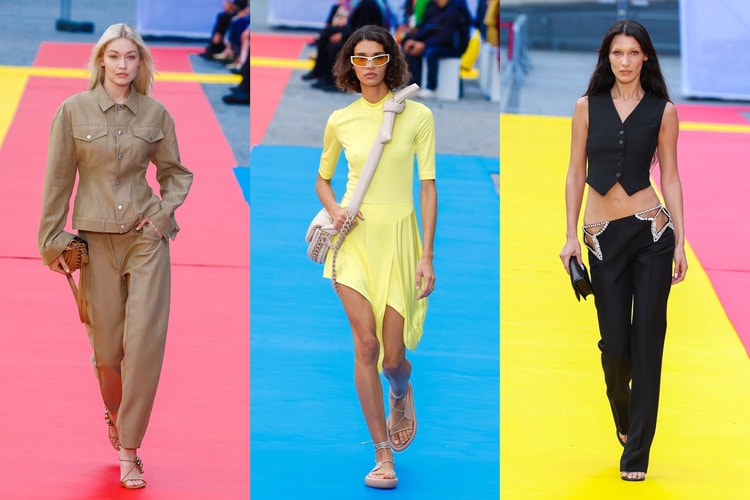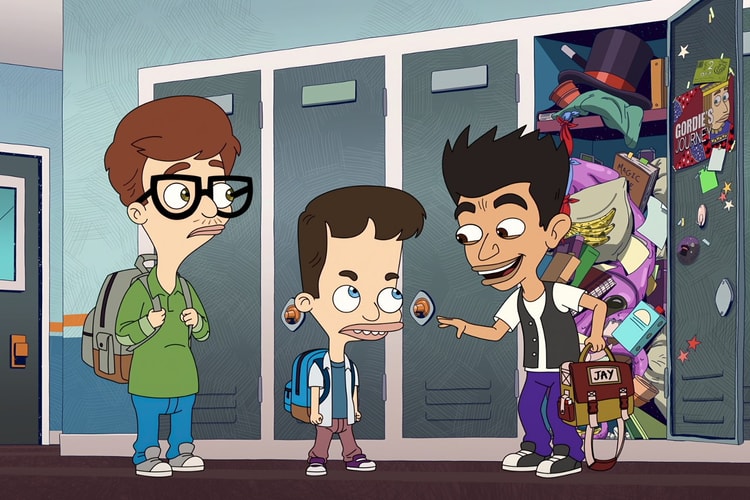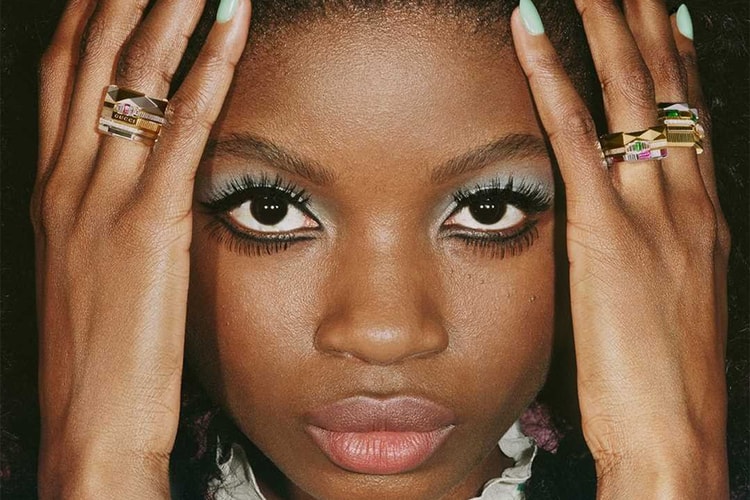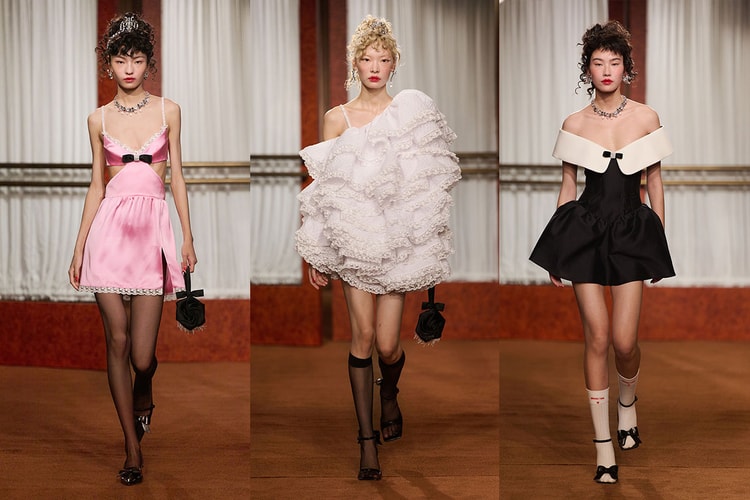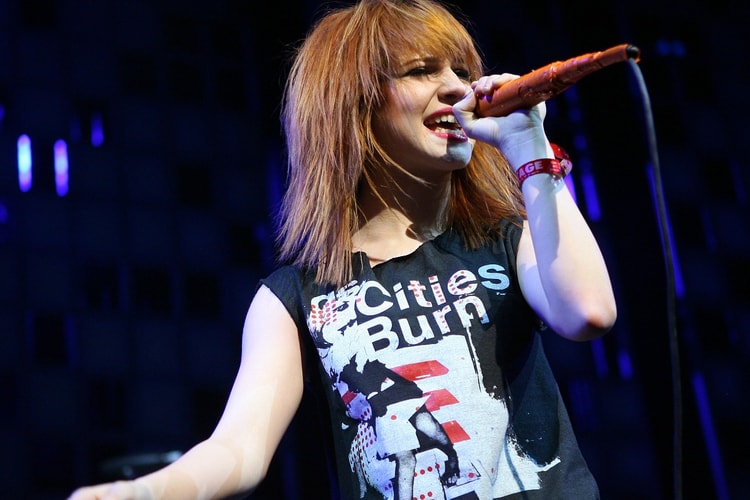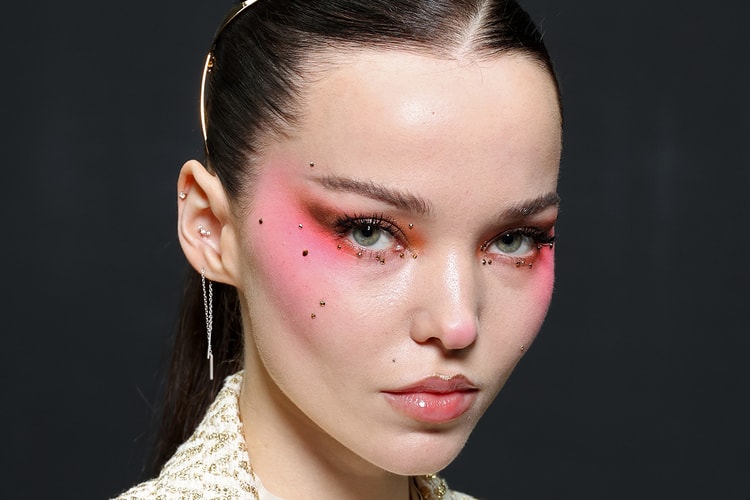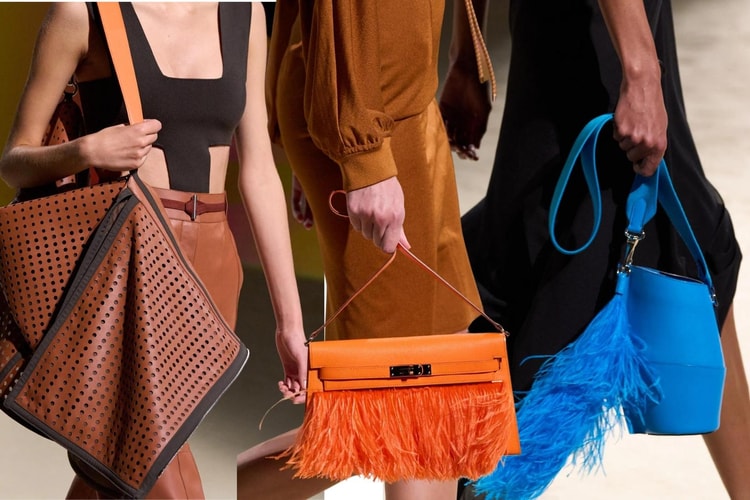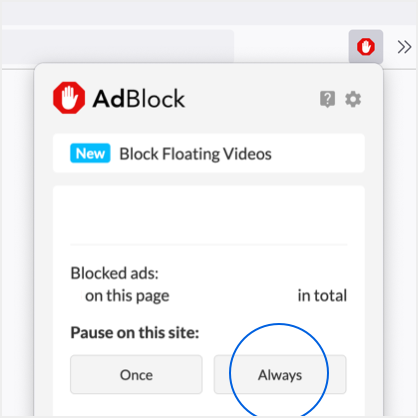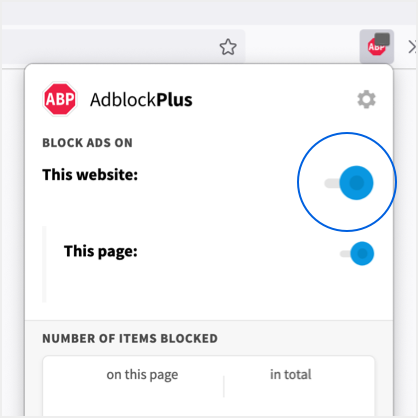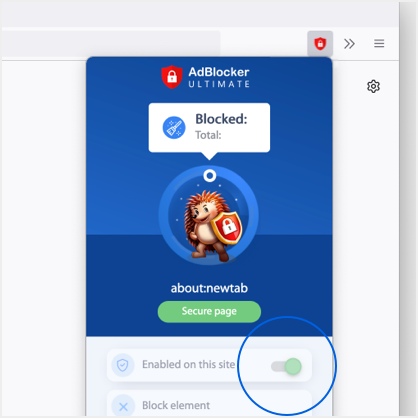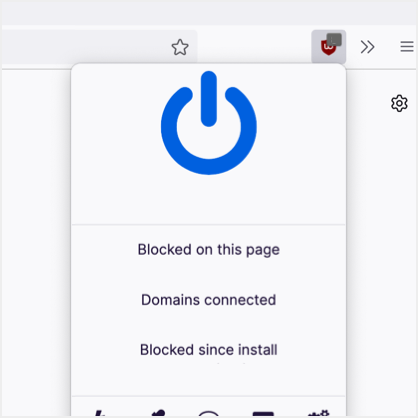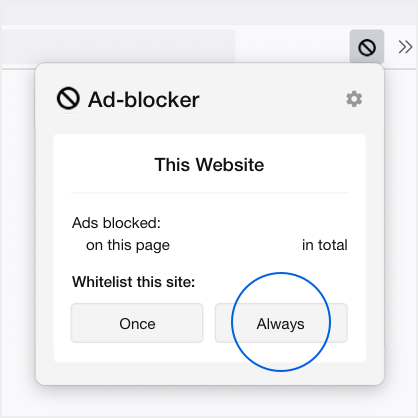Main Nué Is the Rising Swedish Brand Breathing Life Into Used Garments
Co-founders Maja Freiman and Alva Johansson talk to Hypebae about their design process.
Being intentional lies at the core of Main Nué, the rising Swedish label that repairs discarded garments and fabrics with defects.
The emerging brand was founded by Maja Freiman and Alva Johansson, who met during their fashion studies at the Swedish School of Textiles. With day jobs in the secondhand sector, both Freiman and Johansson realized that there are plenty of unused and unwanted materials that end up in landfills, when they can actually be repurposed and reused to create new garments.
The result is a range of unisex T-shirts, dresses and more with unexpected crocheted holes, as well as jeans with playful, colorful patches. Throughout its drops, the label has built its own signature aesthetic, proving that it’s possible to create sustainable fashion without compromising the design or quality.
As Main Nué continues to grow with its recent Copenhagen Fashion Week debut via the NEWTALENT Showroom supported by the Swedish Fashion Council, the two co-founders share with Hypebae the struggles of making sure that the label remains intentional while expanding to more platforms to further push for environmentally friendly fashion.
Continue scrolling to read our conversation with Freiman and Johansson. Main Nué’s designs are available via Instagram DM.
Tell us about your brand. What is the core philosophy of Main Nué?
The name Main Nué comes from the fact that we make everything with our hands. We were trying out different things on Google Translate, and Main Nué — which means “from bare/naked hands” in French — stuck with us.
We both studied fashion design but we didn’t really want to end up in the “fashion industry” when we were finished with our studies. We’ve been working in the secondhand sector after graduation for about five years now. For our day jobs, we handle clothes coming in through donations. We noticed that there are so many good garments that just can’t be sold because of small — or large — defects, but are made with such good materials. Essentially, our philosophy is that we want to add new value and meaning to unwanted, invaluable things through artistic repairing or other methods.
Walk us through the process of creating a garment.
Obviously, because we are working with garments with defects, we start with the materials in the beginning. We’ll see something that needs to be fixed — for instance, a stain on a T-shirt or a small hole — and use that as a starting point. Then, we’ll think about what new possibilities this particular garment could have. We never start knowing what the end result will be like. It’s more of a natural process, and very much depends on what we’re both into in the moment of creation. Lately, we’ve been working a lot with crochet and exaggerated holes. Our process also depends on what other textiles there are in storage, since we’re thinking about how to use and combine all these materials that we’ve sourced.
We always start with wearing the garments ourselves, just to see how it feels on our bodies. Then, we’ll figure out whether the piece needs to be altered in a certain way for it to fit in a nicer way.
Naturally, because of our production and creative process, we don’t really follow the fashion calendar. We started this brand with the plan to drop pieces in small capsules, which we’ve been releasing through Instagram.
View this post on Instagram
In the past, sustainable fashion has been known to be less “stylish,” which has been one of the obstacles in encouraging consumers to make their wardrobes more sustainable. Where do you get the inspiration to build the creative side of the brand?
We just get influenced from what we see on a daily basis, as well as the material that we’re working with itself. This can be anything from how a garment fits and feels on the body, to thinking about new ways of wearing clothes. You can find new shapes with what’s already in the garments. For example, maybe we’ll find a certain curve on a piece and create a bra out of that. It’s fun experimenting with adding new details to garmenets and seeing what happens from there. We work with so many commonly consumed garments like T-shirts, but our process can be as simple as adding a hole to an unexpected part of the piece and it’ll hang entirely differently on the body.
How are your products packaged?
Everything we create or sell something, we put a lot of effort into the packaging, which we think is a nice detail, so that our products feel like a gift. We typically work with anything we have in the studio. If we’re sending something far away, sometimes we’ll take scraps and an IKEA bag and sew them together, so that it can be reused again. We always make sure to include handwritten notes from old cards or bookmarks. Basically, anything laying around in that moment.
When we ship jeans, we create these small toolboxes with small trinkets or patches that hopefully inspire our customers to continue to customize and repair their garments. When something starts to break somewhere, you can add your personal touch with these small details. We try to make the full shopping experience personal.
What have been some of the biggest challenges in running Main Nué?
In the beginning, it was difficult for us to put a fair price on a product, since we put so much time and effort into crafting each piece. It’s the dilemma of trying to explain to someone why something costs as much as it does, as well as thinking of how we can make money from our business. It’s something we’re constantly struggling with — making sure that we’re not compromising the quality or the design too much. We do believe that it’s important to stay true to our original ideas and intention of creating Main Nué in the first place.
We’re constantly reminding ourselves and asking why we’re doing this. We’re actually not interested in making a bunch of T-shirts so that we can sell them. If they don’t sell, they would just become the product of overconsumption as well.
Most of your products are available on Instagram via DM at the moment. Do you plan on launching your own web store or expanding to more retailers?
We’ve previously partnered with the Sweden-based store Nitty Gritty on a few drops, which were the only times we’ve sold outside of Instagram. As we build our brand, we’re looking to collaborate with more retailers both online and IRL because we think it’s important for people to see our garments in person. That’s something that we’re working on right now. We’ve also been talking about opening our own webshop, which will take a bit of time. Overall, we’re just looking for ways to make our garments more accessible to customers.
Do you plan to expand to categories other than fashion — home or interior design, for instance? What’s next for Main Nué?
We’ve actually entered the home category with the launch of a few home textiles such as pillowcases via Nitty Gritty. But that is definitely something we are looking to further explore. We’d like to put Main Nué somewhere in between art and fashion. At some point in the future, we’d love to create a home collection comprising everything from garments to items you can place in your home — for instance, a T-shirt that is framed could be considered both apparel and art at the same time.
This interview has been condensed and edited for clarity.
